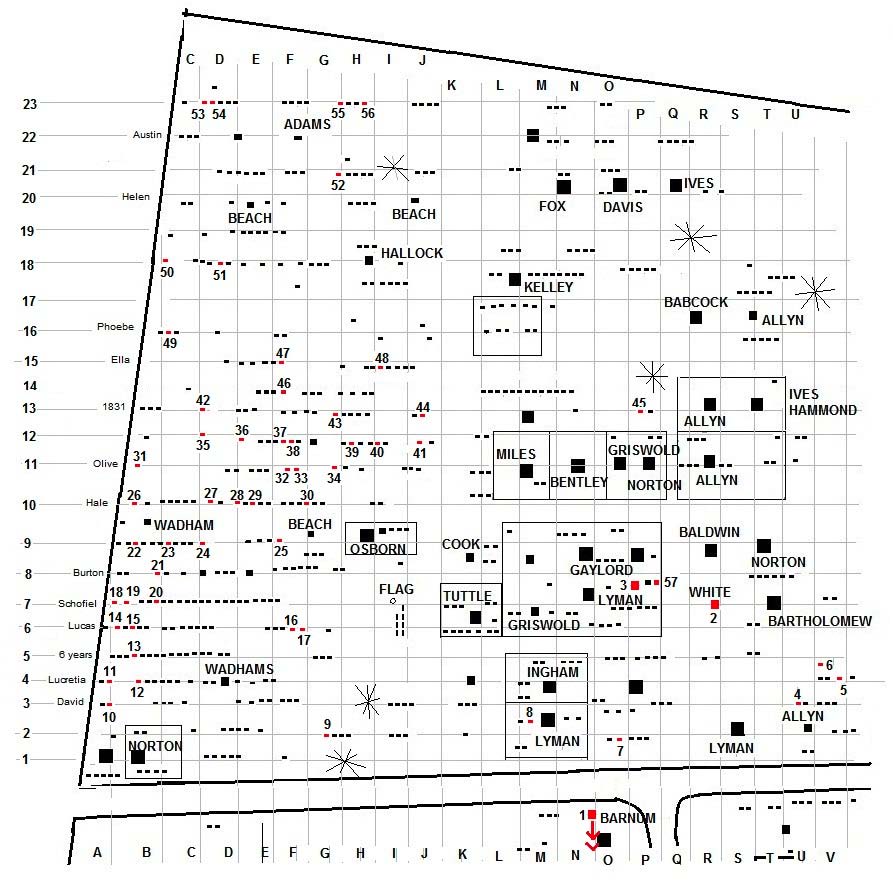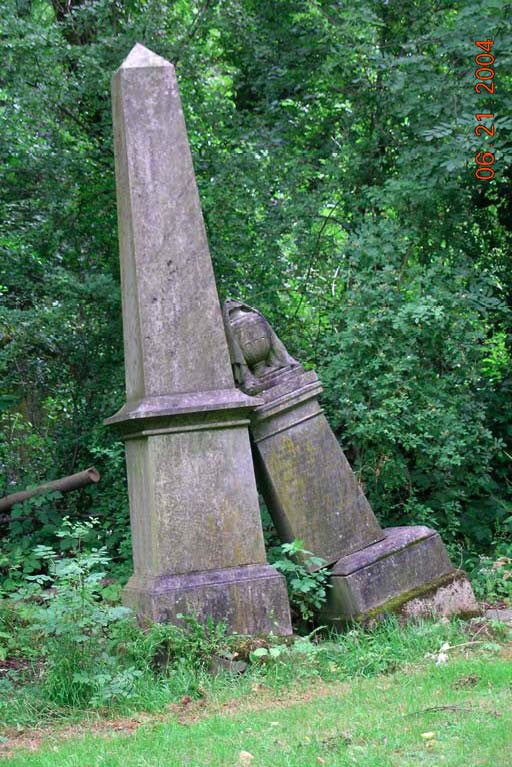Hazardous markers– Risk assessment
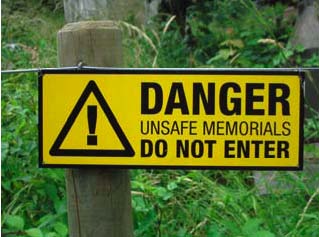
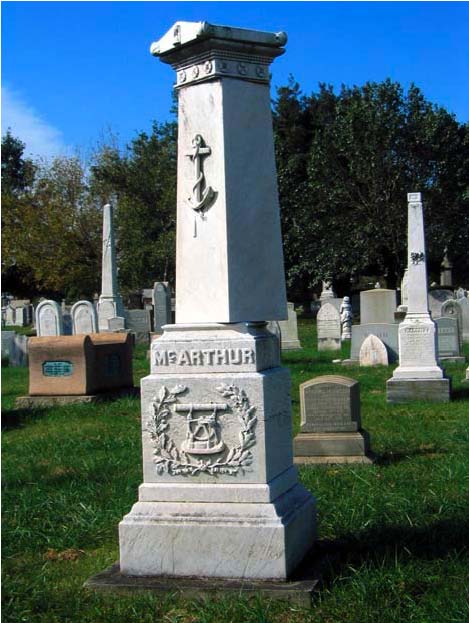 The first conservation and restoration priority in a historic cemetery is always the stabilization of “hazardous” markers.
The first conservation and restoration priority in a historic cemetery is always the stabilization of “hazardous” markers.
They are a danger to themselves, to adjacent markers and most importantly-to the public.
All hazardous markers should be identified and scheduled for stabilization. Larger monuments and table tombs will require specialized procedures and equipment.
For most cemeteries, markers can be prioritized into four technical categories:
| 1.0 | Hazardous —requires immediate action; | |
| 2.0 | Unstable deterioration—requires treatment as soon as possible; | |
| 3.0 | Ongoing deterioration—probably requires treatment in 2 to 5 years; | |
| 4.0 | Stable—no treatment required (re-inspect in 5 years). |
Non-technical prioritization involves the “value” in terms of:
| * | Artistic quality; | |
| * | Historic significance (national or local); | |
| * | Visual contribution to the overall appearance of the site. |
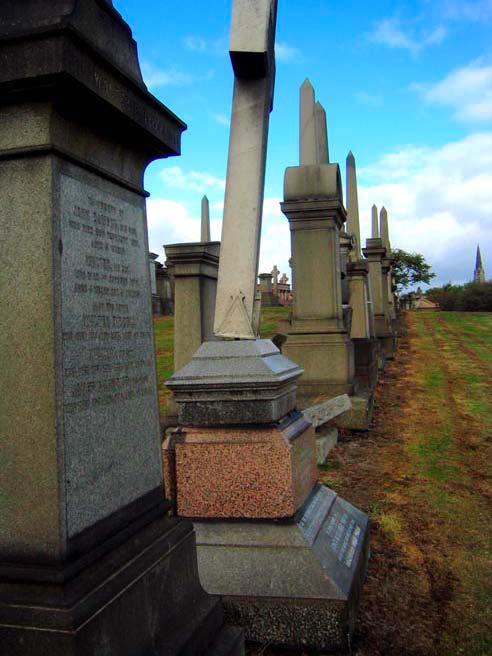 It is difficult to apply a uniform testing procedure to historic memorials, as they are composed of aged materials, assembled in a variable manner.
It is difficult to apply a uniform testing procedure to historic memorials, as they are composed of aged materials, assembled in a variable manner.
The best means of assessing safety in these situations is a combination of detailed inspection, investigation and judgment by experienced professionals.
Observable movement does not necessary mean that the memorial is unsafe and hazardous; it is only an indication that further investigation is necessary.
Monuments in historic cemeteries may be hazardous if they are not plumb and level.
In many instances, however, the hazard may not be entirely obvious; if critical materials (such as mortar and metal fixings) have been seriously compromised by deterioration, a perfectly upright monument might be able to be toppled with only modest lateral pressure.
Risk assessments are a central part of cemetery care, and should be carried out on a routine basis, updating condition survey forms for monuments that appear to be unstable. It is not always simple to determine if and when change over time represents significant structural instability.
Conservation plan: Condition assessment
 A detailed documentation of condition is the basis of all conservation efforts. A condition assessment establishes priorities, and is thus a quantity survey that permits the development of work projects.
A detailed documentation of condition is the basis of all conservation efforts. A condition assessment establishes priorities, and is thus a quantity survey that permits the development of work projects.
The condition assessment determines specific treatments to be used, and is a critical component of bid documents. It can also provide baseline data for periodic re-inspection of monuments that are currently in good condition, and for future reexamination of the stability of conservation treatments.
All monuments designated for assessment are identified, measured, and photographed, 4 by 6 color digital images per the MHC Guidelines for Submitting Digital Photos, (The original, uncompressed digital file will accompany digital prints. Minimum image dimensions: 1600×1200 pixels at 300 ppi or larger. These photo files will be submitted on a CD-R or DVD). If necessary, the approximate location of all the monuments will be recorded on a site plan.
A condition assessment form is prepared for each monument requiring conservation or restoration treatments. The existing conditions are fully described, including: position of monument (e.g., fallen/tilted); type and extent of deterioration (e.g., delamination); soiling; and failed treatments.
Each form also includes stone conservation recommendations, detailing methods and materials appropriate to the remedying of the conditions observed (see sample below)
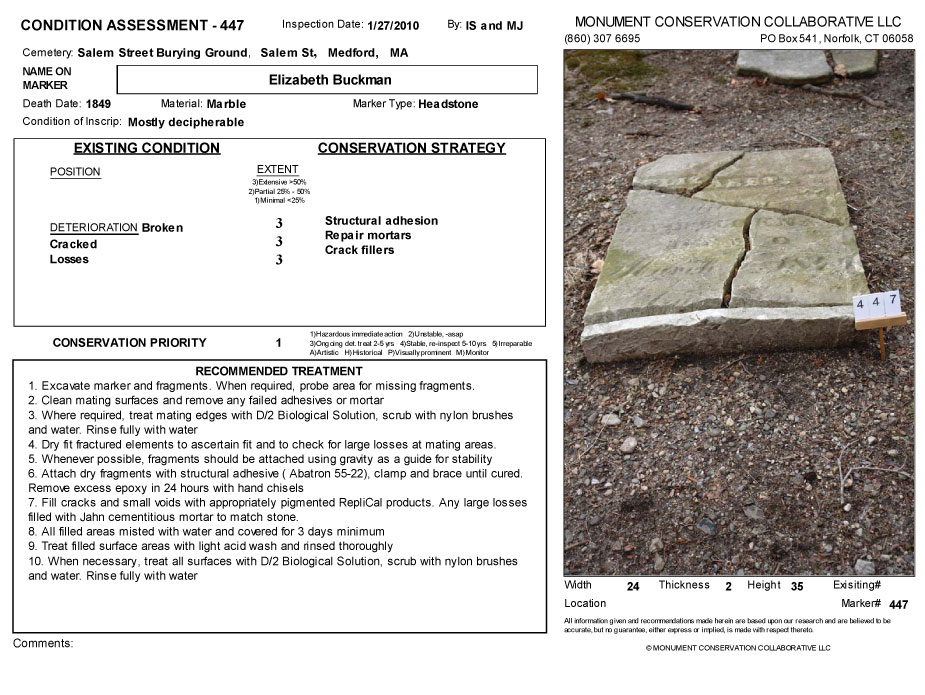
A second round of documentation is the treatment report (see sample below), which will supplement the condition documents with post-treatment photographs and the written record of all work accomplished.
See “Reports” for other examples of assessment and completion reports.
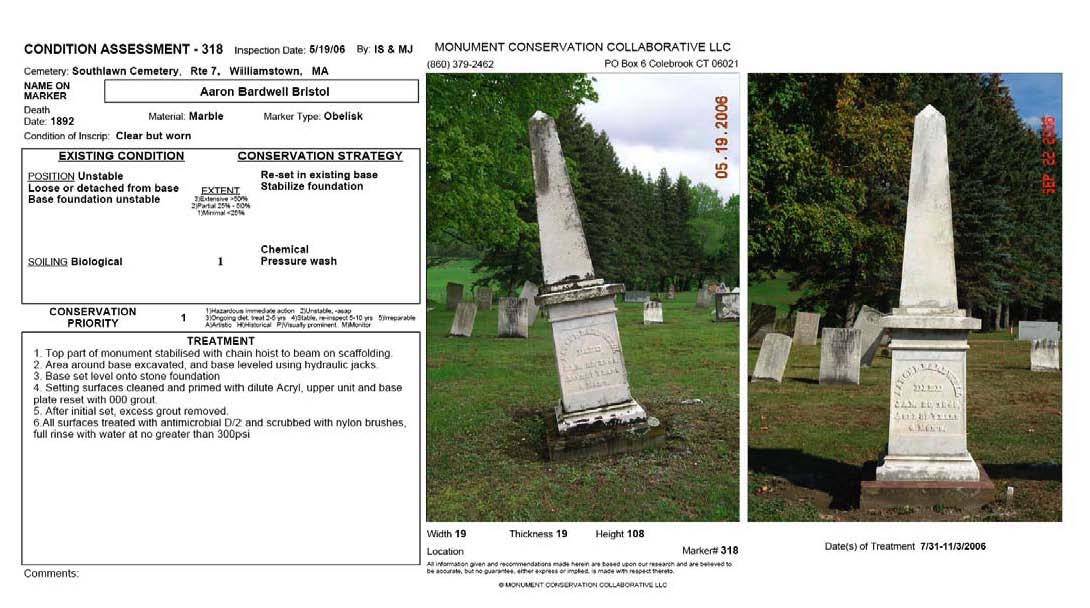
In very large cemeteries the condition of a representative section is assessed and restoration estimates interpreted. A hands-on inspection of each marker in the cemetery would not be feasible or cost effective.
Occasionally, in small cemeteries with a limited number of markers and obvious restoration requirements, it may be more cost effective to combine the condition assessment with the actual restoration treatments.
